Aphidomorpha
Aphids, green flies, plant lice, adelgids, phylloxerids
David L. Stern


This tree diagram shows the relationships between several groups of organisms.
The root of the current tree connects the organisms featured in this tree to their containing group and the rest of the Tree of Life. The basal branching point in the tree represents the ancestor of the other groups in the tree. This ancestor diversified over time into several descendent subgroups, which are represented as internal nodes and terminal taxa to the right.

You can click on the root to travel down the Tree of Life all the way to the root of all Life, and you can click on the names of descendent subgroups to travel up the Tree of Life all the way to individual species.
For more information on ToL tree formatting, please see Interpreting the Tree or Classification. To learn more about phylogenetic trees, please visit our Phylogenetic Biology pages.
close boxIntroduction
Aphids are a group of about 4,400 species of small insects that feed on the phloem fluid of plants. Many species of aphids attack important agricultural crops and are therefore of major economic importance. Aphids combine three traits - thelytokous parthenogenesis (obligate parthenogenesis where females give birth only to female offspring), short generation time (about 10 days on average), and telescoping of generations (where grandaughters begin developing directly within the daughters which are themselves not yet born) - to reach very large population sizes very quickly. These reproductive characteristics allow aphids to quickly colonize ephemeral resources and quickly growing plants and make them ideal enemies of monocultured crops. Many species of aphids display complex life cycles with alternation of sexual and asexual generations and host plant alternation. Host alternation has evolved at least three times independently in the aphids: (1) in the Phylloxeroidea, (2) in the common ancestor of the Pemphigidae, Hormaphididae, and Anoeciidae (Aphidoidea), and (3) in the Aphididae (Aphidoidea).
Alternation of Generations
Aphids are one of the few groups of animals that undergo cyclical parthenogenesis - that is, the alternation of one or many generations of asexual (parthenogenetic) reproduction with a single generation of sexual reproduction. All asexual generations are entirely female. Species that produce both sexual and asexual morphs are holocylic. When a species produces only asexual morphs it is anholocyclic.
In a holocyclic life cycle, as illustrated below, both asexual and sexual morphs are produced at different times of the year. Note that males are present only in one part of the life cycle. They are produced de novo by parthenogenetic females, usually only in the autumn. Aphids can accomplish this feat because they have an XO sex determining mechanism. Individuals with two sex chromosomes (XX) develop into females, whereas individuals with one X chromosome (XO) develop into males. To produce a male, a special "mini-meiosis", which involves only the X-chromosomes, eliminates one of the X chromosomes during oogenesis. Blackman (1974, 1987) provides a detailed review of the phenomenon.
In contrast, anholocyclic species only produce asexual females. They do not produce sexual females and males. Comparing the diagram of holocycly above, with the diagram of anholocycly below, notice that more than just the sexual males and females are missing from the anholocyclic species. In fact, anholocyclic species also lose the direct descendants of the sexual morphs, namely the egg and the fundatrix. Since the fundatrix is often specialized for feeding on the primary host (see discussion of host alternation) anholocyclic species often lose the primary host. Thus, simplification of the life cycle often, but not always, entails both loss of the sexual morphs and loss of host plants. Although many species are either holocyclic or anholocyclic, many other species possess both holocylic and anholocyclic populations.
Host Alternation
Many species of aphids alternate between two taxonomically different host plants at different times of the year. When an aphid species uses only a single host plant it is autoecious. Species that alternate between two host plants are called heteroecious. Two distinct kinds of heteroecious life cycles are found in aphids. Species of the Hormaphididae, Anoeciidae and Pemphigidae have a type of heteroecy with sexuparae. Other aphid species with host alternation do not have sexuparae, but have a life cycle with winged sexual females and winged males.
A typical life cycle of a heteroecious species from the Hormaphididae, Anoeciidae, or Pemphigidae is illustrated below. Aphids alternate between two taxonomically unrelated host plants. The primary host, a tree or shrub, is considered the "ancestral" host, in that the monoecious ancestor of aphid is thought to have attacked such trees. The secondary host is often an herbaceous plant. A specialized winged morph, the sexupara, flies from the secondary host to the primary host and deposits sexual males and females. The males and females mate and the female typically produces a single egg. In temperate regions the egg overwinters and produces the fundatrix, or foundress, in the spring. In many species the fundatrix induces abnormal plant development that results in a gall in which the colony lives for one or several generation.
Some species of the Aphididae have a different kind of host alternation, as illustrated below. The primary difference is that sexuparae are not produced. Instead, winged males and specialized winged females depart from the secondary host. The females produce unwinged oviparous females that mate with the winged males.
Other Names for Aphidomorpha
- aphids
- green flies
- plant lice
- Aphids, green flies, plant lice, adelgids, phylloxerids
References
Blackman, R.L. 1974. Aphids. Ginn, London.
Blackman, R.L. 1987. Reproduction, cytogenetics and development. in Aphids: Their biology, natural enemies, and control, vol 2A. Eds. A. K. Minks and P. Harrewijn. Elsevier, Amsterdam.
Blackman, R.L. and V.F. Eastop. 1984. Aphids on the world's crops: an identification and information guide. Wiley, Chichester.
Blackman, R.L. and V.F. Eastop. 1994. Aphids on the world's trees: an identification and information guide. CAB International in association with the Natural History Museum, Wallingford.
Dixon, A. F. G. 1985. Aphid Ecology. Glasgow: Blackie & Son Limited.
Heie, O. E. 1980. The Aphidoidea (Hemiptera) of Fennoscandia and Denmark. 1. General Part. The families Mindaridae, Hormaphididae, Thelaxidae, Anoeciidae, and Pemphigidae. Fauna Entomologica Scandinavica, 9.
Heie, O. E. 1987. Palaeontology and phylogeny. in Aphids: Their biology, natural enemies, and control, vol 2A. Eds. A. K. Minks and P. Harrewijn. Elsevier, Amsterdam.
Heie, O. E. 1994. Aphid ecology in the past and a new view on the evolution of Macrosiphini. in Individuals, Populations and Patterns in Ecology. Eds. S. R. Leather et al. Intercept, Andover. pp. 409-418.
Minks, A. K. and P. Harrewijn, eds. 1987. Aphids: Their biology, natural enemies and control. Elsevier, Amsterdam.
Moran, N. A. 1988. The evolution of host-plant alternation in aphids: Evidence for specialisation as a dead end. The American Naturalist 132:681-706.
Moran, N. A. 1992. The evolution of aphid life cycles. Annual Review of Ecology and Systematics 37:321-348.
von Dohlen, C. D. and N. A. Moran. 1995. Molecular phylogeny of the Homoptera: a paraphyletic taxon. Journal of Molecular Evolution. 41:211-223.
Title Illustrations

| Scientific Name | Adelges cooleyi |
|---|---|
| Comments | Cooley spruce gall adelgid, alate stage emerged from gall |
| Acknowledgements | Courtesy InsectImages.org (#1326081) |
| Specimen Condition | Live Specimen |
| Source Collection | Bugwood Network/Forestry Images |
| Copyright | © Whitney Cranshaw, Colorado State University |
| Scientific Name | Longistigma caryae |
|---|---|
| Location | Texas |
| Comments | Giant bark aphids |
| Acknowledgements | Courtesy InsectImages.org (#1150117) |
| Specimen Condition | Live Specimen |
| Life Cycle Stage | Adults and nymphs |
| Source Collection | Bugwood Network/Forestry Images |
| Copyright | © 2002 Herbert A. "Joe" Pase III, Texas Forest Service |
About This Page
David L. Stern

Princeton University, Princeton, New Jersey, USA
Correspondence regarding this page should be directed to David L. Stern at
Page copyright © 1995 David L. Stern
 Page: Tree of Life
Aphidomorpha. Aphids, green flies, plant lice, adelgids, phylloxerids.
Authored by
David L. Stern.
The TEXT of this page is licensed under the
Creative Commons Attribution License - Version 3.0. Note that images and other media
featured on this page are each governed by their own license, and they may or may not be available
for reuse. Click on an image or a media link to access the media data window, which provides the
relevant licensing information. For the general terms and conditions of ToL material reuse and
redistribution, please see the Tree of Life Copyright
Policies.
Page: Tree of Life
Aphidomorpha. Aphids, green flies, plant lice, adelgids, phylloxerids.
Authored by
David L. Stern.
The TEXT of this page is licensed under the
Creative Commons Attribution License - Version 3.0. Note that images and other media
featured on this page are each governed by their own license, and they may or may not be available
for reuse. Click on an image or a media link to access the media data window, which provides the
relevant licensing information. For the general terms and conditions of ToL material reuse and
redistribution, please see the Tree of Life Copyright
Policies.
Citing this page:
Stern, David L. 1995. Aphidomorpha. Aphids, green flies, plant lice, adelgids, phylloxerids. Version 01 January 1995 (under construction). http://tolweb.org/Aphidomorpha/10985/1995.01.01 in The Tree of Life Web Project, http://tolweb.org/




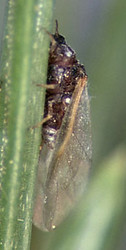
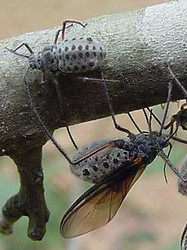
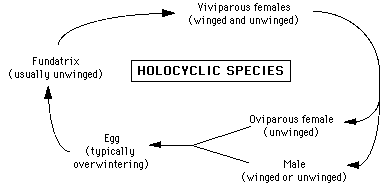
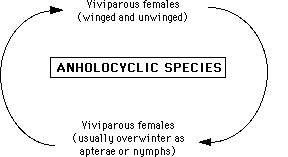
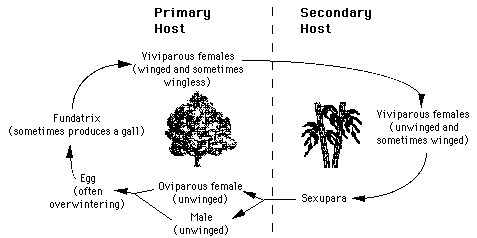
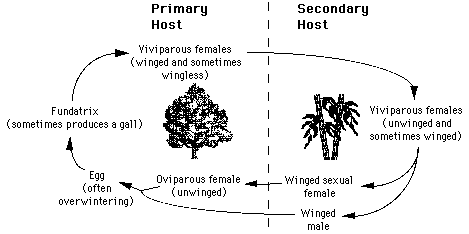



 Go to quick links
Go to quick search
Go to navigation for this section of the ToL site
Go to detailed links for the ToL site
Go to quick links
Go to quick search
Go to navigation for this section of the ToL site
Go to detailed links for the ToL site